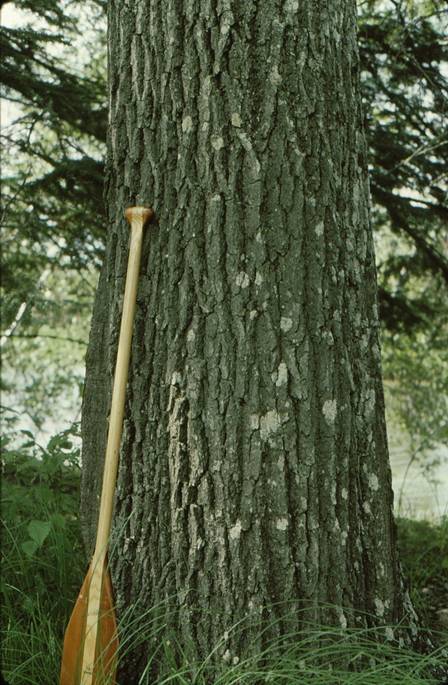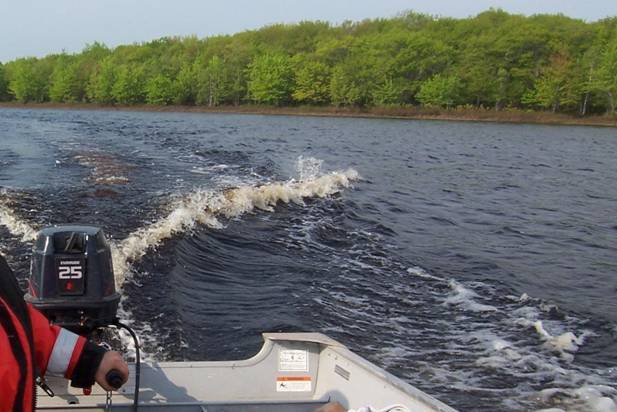Portobello Creek National Wildlife Area Management Plan: chapter 3
3 Management challenges and threats
The challenges and threats faced by the Portobello Creek National Wildlife Area (NWA) are managed in the context of the broader Lower Saint John River ecosystem and in concert with the provincially administered Grand Lake Meadows Protected Natural Area. Although activities that occur outside of the boundary of the NWA are beyond the scope of this management plan, many of these activities have direct bearing on the successful management of the NWA.
3.1 Tourism
Ever-increasing ecotourism, while often providing valuable education opportunities to the public, adds additional pressures to protected areas that are specifically set aside for wildlife first. The blurring of the lines between ecotourism and adventure tourism adds to the problem of cumulative environmental effects. As local communities and businesses try to attract tourism dollars, public lands and protected areas such as Portobello Creek NWA are advertised as destinations by external interests, often without a full understanding of the regulations by which an area is protected. Visitors to sites such as Portobello Creek NWA may not always understand the distinctions between a park (national, provincial, municipal) and an NWA. Increased public use needs to be in concert with public education to ensure that the conservation objectives of the NWA are met.
3.2 Commercial fishing
The American Eel fishery has long been important in the Maritime provinces (Eales 1966; Cairns et al. 2008). The commercial fishery for American Eel within the Portobello Creek may impact on local fish populations through by-catch, where untargeted fish species (and probably some amphibians) are killed.
Gaspereau (Alewife) within the French Lake system at the mouth of Portobello Creek provides an important bait fishery for the lobster fishery. This is part of the "lower tributaries of the Saint John River" fishery managed by Fisheries and Oceans Canada. The overall Saint John River fishery exceeds 1000 tons annually and is the largest in the Bay of Fundy. This "lower tributaries of the Saint John River" unit has been below its 1950-1999 mean catch for over 20 years (Department of Fisheries and Oceans 2002). The overall biological implications to the Portobello Creek ecosystem from such a large annual removal of biomass are largely unknown.

3.3 Recreational boating
The waterways of the Portobello Creek and connected backwaters are frequented by fishers, hunters and recreational boaters. The current fragmentation of the NWA hinders enforcement of the protected area regulations in open waters. Much of the problem can be minimized through education, as operators of large-horsepower watercraft are frequently unaware of the harm their wake can cause to plants and animals (Figure 14). Nests of birds such as Common Loon and Ring-necked Duck are particularly susceptible to flooding and loss from this activity.

3.4 Agriculture and forestry
The rich floodplains of the Saint John River, combined with a long growing season, make this an important agricultural area of the province. Many farms border the river and farm the higher and better-drained areas of the floodplain. The sites of lower elevation are predominantly hardwood forests that have been used for wood extraction.
Commercial production of the native Cranberry (Vaccinium macrocarpon) has increased substantially in recent years in New Brunswick, with an expansion of the industry in the area from Sheffield to Maugerville (Keith 2000). These projects consist of large growing beds encircled by a high dyke. The creation of these beds tends to be on the lower lands, with some of the dykes often oriented perpendicular to the usual flow of water (Figure 15). The overall cumulative environmental effects on the floodplain ecosystem and ability of the Portobello Creek NWA to act as an overflow during extreme flood conditions are largely unknown.

3.5 Predicted climate change impacts
As climate continues to warm, local plant and animal communities may not have significant time to respond. Areas such as Portobello Creek, with above-average temperature conditions in the province, may be one of the first to see the presence of more southern species. At the same time, these climatic conditions may increase the presence of insect pests that otherwise are kept in check by colder temperatures. Warmer temperatures do not always mean less snow. Climate change could lead to more frequent and damaging flooding events, making the Portobello Creek floodplain all the more important as a safeguard to adjacent communities.
3.6 Off-road vehicles
Illegal use of off-road vehicles such as all-terrain vehicles, especially in regions abounding in wetlands, is a problem for protected area managers and landowners in general. Off-road vehicle use leads to the degradation or destruction of plant cover (Hosier and Eaton 1980; Ross 1992). It can also lead to soil compaction, removal of the top layer of soil, and alterations to drainage, which in turn may degrade or destroy plant cover and the habitat of most local animal species.
The use of off-road vehicles in streams and wetlands results in habitat destruction and loss. Often, the worst damage is in the form of "braiding," where successive operators, in order to bypass a wet area, make a series of new and parallel trails adjacent to an existing one. Use of off-road vehicles is prohibited within Portobello Creek NWA.
3.7 Habitat fragmentation
As forest lands become more valuable, once-inaccessible areas are eventually harvested. Old-growth floodplain forests on private lands within the Portobello Creek system are being cut at an accelerated rate. This is being accomplished through the construction of roads through once-unaltered lands and the building of winter roads over frozen lakes and wetlands. However, biological processes are not only resilient but also are often measured in time scales longer than human life. It is hoped that this habitat fragmentation within the Portobello Creek floodplain will be recoverable as acquisition continues to protect this area.